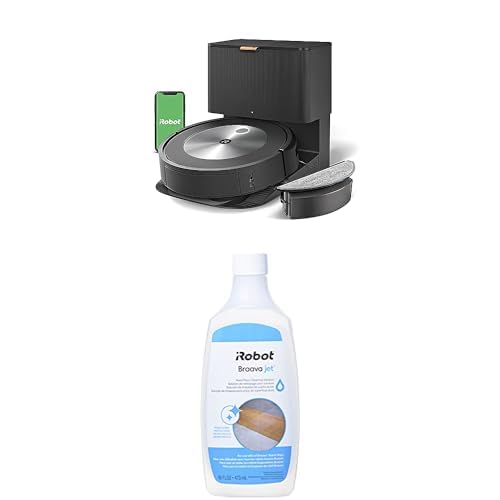robotvacuummops of a Self-Empting Vacuum
While the most recent robot vacuums are extremely quiet when they're being used but emptying them is an issue. This is especially true if your robot vacuum has a self-emptying bottom.
The bases come with docks that connect to the robot vaccum and vacuums out the debris into a bigger storage bin while charging the device. This means that the robot vacuum's dustbin is no longer required to be cleaned every two or three cleaning sessions, but only once every 30 to 60 days.
1. Convenience
It might seem unprofessional to let your robot vacuum itself clean itself however, it's an excellent convenience. The majority of robots have tiny dustbins that need to be empty manually after every cleaning session, which can take time and hinder the robot's ability to finish an entire room's worth work in one session. Self-emptying vacuums come with an element that will automatically empty the dustbin once it is full. This means you don't have to having to bend down to empty the small bin.
Based on the model, self-emptying robots also have a larger bin that can accommodate a month's worth of debris. The dirt is quickly transferred from the robot's base to the bin, which makes it a great option for those who have large houses or pets that shed a significant amount of.
Another important thing to consider when looking at a self-emptying robot vacuum is that they're typically more expensive than other kinds of models. This is due to the fact that they're equipped with a more sophisticated base with a function that goes beyond charging your robot vacuum.
It may seem obvious but self-emptying bases are typically quite tall. This means they could take up more space than other bases, which can be an issue for smaller homes or those with small storage spaces. The design of some self-emptying robotic vacuums could be a visual annoyance. While it's definitely not a deal-breaker for most but it could be a consideration for people who are concerned about the look of their home. The good news is, many robot vacuums with self-emptying base designs look amazing. I've had people come up to me and compliment my impressive piece of technology. Some might think this alone to justify the higher price.
2. Less Allergens
Allergens can pose a problem in many households, especially in the case of someone who has allergies. A self-emptying vacuum can reduce the amount of pet dander, dust and other allergens that are released into the air after vacuuming. You can be sure all the nasty particles will be sucked up into the filter and bag instead of being released into the air. This can affect those with allergies.
If you're looking to make your vacuum more allergy-friendly, consider choosing one with HEPA filtration and a wide range of attachments for cleaning various surfaces. These types of vacuums are great to remove pet hair as well as textured crumbs and hard-to-clean debris from your home. This model comes with an extension of 25 feet and reaches from floor to ceiling.
3. Easier Maintenance
Automating your robot vacuum to empty the dustbin at the base of its docking station is a huge benefit. It helps prevent the bin overfilling, which could cause obstructions that could make your robot smell bad and stop working properly. It's also more clean than having to empty the trash manually, and is probably healthier for people with allergies, since it prevents allergens from being kicked back into the air. The Samsung Jet Bot+ has large bins that hold more debris than other self-emptying robot vacuums. This can make your floors cleaner longer. The bin even has an inbuilt filter that can trap dirt, pet hair, and other small particles. This makes it easier to clean and less likely to overfill than other self-emptying robots.
4. A Shorter Time
For people that struggle with their busy schedules, self emptying robots are an absolute game changer. They let you finish more cleaning tasks without having to physically be there and empty the dustbin after every cleaning job. This allows you to spend less time doing chores and spend more time taking a break or doing other activities.

Robot vacuums come with a small bin or dustbin that is used to collect the debris and dirt after every cleaning cycle. When you empty the dustbin you are exposed to all of the harmful substances that were released into the air. It is possible to clean it manually before you can use it again. In 2018 the first self-emptying robot vacuum cleaners were released. When the bin of a self-emptying vacuum becomes full the robot returns to its docking station, and then connects to the base station. The debris and dust are then removed from the bin with a loud whoosh into a foot high base canister which is equipped with a disposable bag. The vaccum then replenishes its batteries and goes back to its pre-programmed cleaning path.
Manufacturers typically rate the canister bags as being able to hold debris for 30-60 days. This means that you'll need to empty the vaccum's base station approximately once or twice a month depending on how much you clean and how filthy your floors become. As opposed to emptying the dustbin of a regular robot vacuum after every cleaning session, this is an enormous time savings and it also means you're exposed to less allergens on a more frequently.
Self-emptying robots can save you time by eliminating the necessity of replacing the filter. We've all done this at least once. It also helps avoid problems such as clogs and overstuffing that can cause your robot to smell or stop working altogether.
